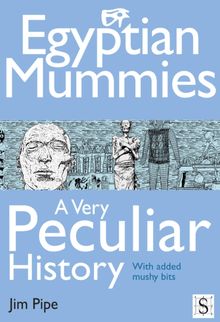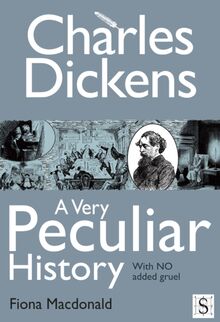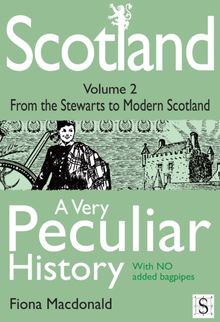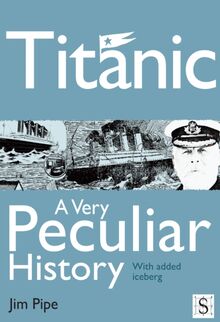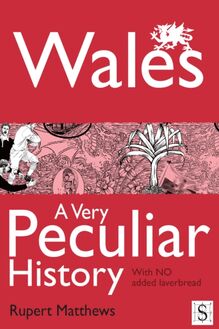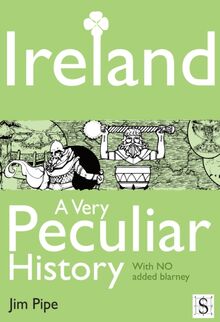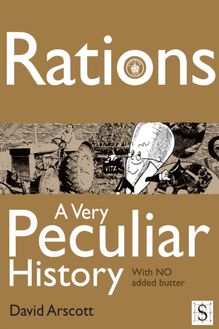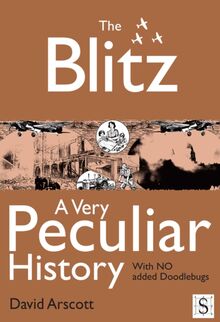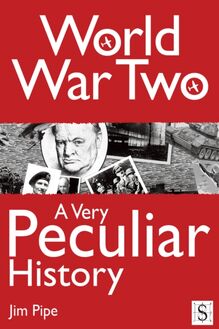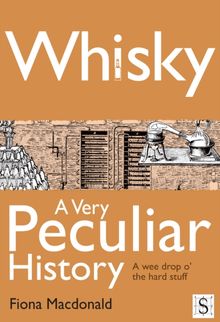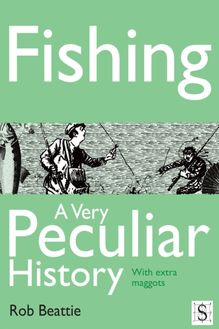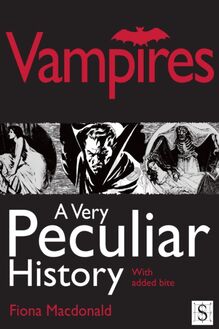-
 Univers
Univers
-
 Ebooks
Ebooks
-
 Livres audio
Livres audio
-
 Presse
Presse
-
 Podcasts
Podcasts
-
 BD
BD
-
 Documents
Documents
-
- Cours
- Révisions
- Ressources pédagogiques
- Sciences de l’éducation
- Manuels scolaires
- Langues
- Travaux de classe
- Annales de BEP
- Etudes supérieures
- Maternelle et primaire
- Fiches de lecture
- Orientation scolaire
- Méthodologie
- Corrigés de devoir
- Annales d’examens et concours
- Annales du bac
- Annales du brevet
- Rapports de stage
La lecture à portée de main
Vous pourrez modifier la taille du texte de cet ouvrage
Découvre YouScribe en t'inscrivant gratuitement
Je m'inscrisDécouvre YouScribe en t'inscrivant gratuitement
Je m'inscrisEn savoir plus
Vous pourrez modifier la taille du texte de cet ouvrage
En savoir plus

Description
Sujets
Informations
| Publié par | Andrews UK |
| Date de parution | 27 janvier 2012 |
| Nombre de lectures | 0 |
| EAN13 | 9781908759283 |
| Langue | English |
Informations légales : prix de location à la page 0,0300€. Cette information est donnée uniquement à titre indicatif conformément à la législation en vigueur.
Extrait
Title Page
BRIGHTON, A VERY PECULIAR HISTORY
With added Hove, actually
Written by
David Arscott
Created and designed by David Salariya
Publisher Information
First published in Great Britain in MMIX by Book House, an imprint of
The Salariya Book Company Ltd
25 Marlborough Place, Brighton BN1 1UB
www.salariya.com
www.book-house.co.uk
Digital edition converted and distributed in MMXII by
Andrews UK Limited
www.andrewsuk.com
Editor: Jamie Pitman
Assistant editor: Jodie Leyman
Illustrated by Carolyn Franklin
Additional artwork: David Antram, Mark Bergin, John James, Nick Hewetson, Rob Walker
© The Salariya Book Company Ltd MMIX
All rights reserved. No part of this publication may be reproduced, stored in or introduced into a retrieval system or transmitted in any form, or by any means (electronic, mechanical, photocopying, recording or otherwise) without the written permission of the publisher. Any person who does any unauthorised act in relation to this publication may be liable to criminal prosecution and civil claims for damages.
Every effort has been made to trace copyright holders. The Salariya Book Company apologises for any omissions and would be pleased, in such cases, to add an acknowledgement in future editions.
Visit our website at
www.book-house.co.uk
or go to
www.salariya.com
for free electronic versions of:
You Wouldn’t Want to be an Egyptian Mummy!
You Wouldn’t Want to be a Roman Gladiator!
You Wouldnt Want to Join Shackleton’s Polar Expedition!
You Wouldn’t Want to Sail on a 19th-Century Whaling Ship!
Quotes
‘A visit to Brighton comprised every possibility of earthly happiness.’
Jane Austen, Pride and Prejudice
‘It is the fashion to run down George IV, but what myriads of Londoners ought to thank him for inventing Brighton! One of the best of physicians our city has ever known, is kind, cheerful, merry Doctor Brighton.
W. M. Thackeray, The Newcomes
‘Brighton looks like a town that is constantly helping the police with their enquiries.’
Keith Waterhouse
‘Anyone who does not live in Brighton must be mad and ought to be locked up.’
S. P. B. Mais
Ten places that Brighton isn’t
1. Eastbourne. A resort a little to the east of Brighton ‘built by gentlemen for gentlemen’. It still has the reputation of being comfortably genteel and elderly – whereas Brighton is young and exciting.
2. Littlehampton. West of Brighton, deserted for much of the year and with a vast expanse of sand. Brighton is always busy – and, except at low tide, its seafront is deep in lovely shingle.
3. Blackpool. Up in the chilly north-west, with three piers, a famous tower and crowds of noisy people eating fish & chips and whelks, although not necessarily at the same time. Two of Brighton’s three piers have gone and it has no tower as yet – but it’s warmer here, and the visitors are much more cultured.
4. Scarborough. Up in the chilly north-east, miles from anywhere and with a cliff that is dramatically collapsing into the sea. It’s warmer in Brighton – and the cliff fell into the sea centuries ago.
5. Torremolinos. A haven for badly dressed tourists getting drunk and singing the Chicken Song. Brighton’s cooler – and some of us prefer Glyndebourne opera house for our music.
6. Robinson Crusoe’s island. Hot, uninhabited, sprinkled with palm trees and serenely peaceful – but can you imagine the boredom?
7. Rotterdam. Europe’s largest port, and a fine example of how to turn an area of coast into a bustling commercial centre, with industries packed along the quaysides. There’s little sign of heavy industry in Brighton, thankfully – although the occasional fishing boat bobs by.
8. Rio de Janeiro. The home of the body beautiful, with sun-tanned strutters parading the beach to a backdrop of Sugarloaf Mountain. Brighton has its own nudist beach, the very first officially designated one in Britain – but you really wouldn’t want to witness the shivering humanity who perch their naked bottoms on the unforgiving Brighton pebbles.
9. London. No, of course not – but Brighton has long been known as London-by-the-Sea because of the vast numbers of people who flock in from the capital whenever they get the chance – and they know a good thing when they see it.
10. Paris. No, again, but we’re getting warmer. The French capital has a reputation not only for elegant good living, but also for being rather ‘naughty’. Think of Brighton as Paris with the sea tacked on.
Hove, actually
•Until the two boroughs were officially merged in 1997, Brighton and Hove were uneasy neighbours with different histories who didn’t quite get on.
•As far as Hove was concerned, young Brighton was noisy, boisterous, chippy – a bit too full of itself.
•Brighton thought Hove was dull, elderly and unimaginative – something of a drag.
•Attitudes such as these don’t change overnight. The Peace Statue on the seafront marks the dividing line between the two, and local inhabitants are acutely aware of which side they live on.
•Suggest to someone west of the boundary that they come from Brighton, and the stock response is, ‘Hove, actually’.
•You hear it so often that it’s almost become part of the address.
Introduction: What makes Brighton special?
We all love the seaside and the sense of freedom it brings, but Brighton has a reputation above all other resorts in Britain for the ‘edgy’ pleasures it offers to visitors from all over the world.
It’s not a bucket-and-spade kind of place, but a sophisticated ‘melting pot’ for a wide variety of people who relish the idea of having a good time in their own way.
In fact (and don’t you dare tell them this), sometimes it feels like a place for grown-ups who haven’t quite grown up at all.
The observant reader will already have noticed that the early chapters of this book are fairly short. That’s not just because it took a long time for a proper town to develop here (as we shall see, it first became prosperous in medieval times), but because Brighton discovered its true purpose in life only about 250 years ago.
That purpose has been to attract visitors in their droves, parting them from their cash – and sometimes from their common sense, too – in return for an endless, and colourfully varied, range of entertainments.
Of course, the people who live here care very much about things like schools, hospitals and rubbish collections, but that’s certainly not what Brighton means to everyone else. As far as the wider world is concerned it isn’t really owned by its inhabitants at all – or not in the way that matters.
It’s always been a place for other people to pass through on their way to somewhere else, or to pause in for a little fun before going away again. This has given it a very peculiar history.
The obsession with having a good time began with George, the Prince Regent, and his extravagant friends (can you imagine the gaudy Royal Pavilion being built in any other seaside town?), and it hasn’t stopped since.
In many ways this has been very useful for Brighton. The rich folk who came here during the 18th century for the ‘sea-water cure’ helped to revive a town that was very much down on its luck.
What’s in a name?
It wasn’t until 1810 that the authorities decided officially to call their town Brighton.
Before that it was known as something like Brighthelmston, although more than 40 variations on the theme have been recorded. (In the Domesday Book it was Bristelmestune.)
The ‘tun’ bit signifies a homestead, and the best guess is that someone called Beorthelm (which means ‘bright helmet’) was the bigwig here in Saxon times – but, if so, the poor chap’s been completely forgotten.
But the influx of so many outsiders can cause problems, too. Once the railway had arrived in the 1840s, Brighton grew faster than any other town in Britain, and during the later Victorian period many areas were horribly overcrowded, with foul-smelling slums that were a terrible health hazard because people drank water raised in buckets from wells that lay right next to their cesspits.
During the 1930s, day-trippers arrived here in their thousands, but some of them weren’t the kind of people you’d want as next-door neighbours. There were razor-wielding gangs who frequented the racecourse, and for a time the town had a very bad reputation indeed.
Fortunately, Brighton has always found ways to rise above its problems, knowing that unless it puts on a good show for its visitors it can’t hope to be prosperous.
Today, as we shall see, it’s a bright and cheerful city, but – just like some of the characters who like to have their fun here – it has a colourful and occasionally disreputable past. Read on . . .
What’ s under your feet?
The first thing you need to know about Brighton is that the land it sits on wasn’t always there.
Let’s go back a hundred million years to a Sussex that wasn’t the attractive jumble of hills and valleys we know today, but a flat expanse of nothing, covered by water.
At one period this was a swampy region, criss-crossed by meandering rivulets and inhabited by iguanodons and other dinosaurs. Later it was flooded by the sea. The bands of sediment that built up on the bottom hardened to become the eventual rocks and soils of Sussex: sandstones, clay, shales, limestone and chalk. During all these vast aeons they lay in an orderly fashion, one on top of the other, quietly minding their own business.
-
 Univers
Univers
-
 Ebooks
Ebooks
-
 Livres audio
Livres audio
-
 Presse
Presse
-
 Podcasts
Podcasts
-
 BD
BD
-
 Documents
Documents
-
Jeunesse
-
Littérature
-
Ressources professionnelles
-
Santé et bien-être
-
Savoirs
-
Education
-
Loisirs et hobbies
-
Art, musique et cinéma
-
Actualité et débat de société
-
Jeunesse
-
Littérature
-
Ressources professionnelles
-
Santé et bien-être
-
Savoirs
-
Education
-
Loisirs et hobbies
-
Art, musique et cinéma
-
Actualité et débat de société
-
Actualités
-
Lifestyle
-
Presse jeunesse
-
Presse professionnelle
-
Pratique
-
Presse sportive
-
Presse internationale
-
Culture & Médias
-
Action et Aventures
-
Science-fiction et Fantasy
-
Société
-
Jeunesse
-
Littérature
-
Ressources professionnelles
-
Santé et bien-être
-
Savoirs
-
Education
-
Loisirs et hobbies
-
Art, musique et cinéma
-
Actualité et débat de société
- Cours
- Révisions
- Ressources pédagogiques
- Sciences de l’éducation
- Manuels scolaires
- Langues
- Travaux de classe
- Annales de BEP
- Etudes supérieures
- Maternelle et primaire
- Fiches de lecture
- Orientation scolaire
- Méthodologie
- Corrigés de devoir
- Annales d’examens et concours
- Annales du bac
- Annales du brevet
- Rapports de stage
